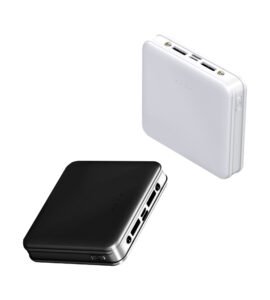How do Power banks work?
Power banks, also known as portable chargers, work by storing electrical energy in their internal batteries and then releasing it to charge other devices such as smartphones, tablets, or laptops.

Here's a basic overview of how power banks work:
Internal Battery: Power banks contain one or more rechargeable lithium-ion or lithium-polymer batteries. These batteries store electrical energy.
Charging the Power Bank: To charge the power bank itself, you typically connect it to a power source such as a wall outlet or a USB port on a computer using a charging cable. The power bank's internal circuitry regulates the charging process to prevent overcharging and ensure safety.
Discharging to Charge Devices: When you want to charge your device, you connect it to the power bank using a compatible charging cable. The power bank's internal circuitry detects the connected device and adjusts the voltage and current accordingly to provide the appropriate charging level.
Capacity: The capacity of a power bank is measured in milliampere-hours (mAh) or watt-hours (Wh). This indicates how much energy the power bank can store. For example, a 20000mAh power bank can theoretically provide 20000mAh of charge at the voltage it operates.
Output Ports: Power banks usually have one or more output ports where you can connect your devices for charging. These ports may include USB-A ports, USB-C ports, or others, depending on the model of the power bank.
Safety Features: High-quality power banks incorporate safety features such as overcharge protection, over-discharge protection, short circuit protection, and temperature control to prevent damage to the power bank and the connected devices.
Overall, power banks offer a convenient way to recharge your electronic devices while on the go, providing portable power whenever you need it.